Killiney Hill has long been home to a host of very fine sites with sea views, and it's not for nothing that vast sums are regularly exchanged for properties here. Prices are set in direct proportion to the quality of the sea views and a roll call of high-profile figures choose to locate here.
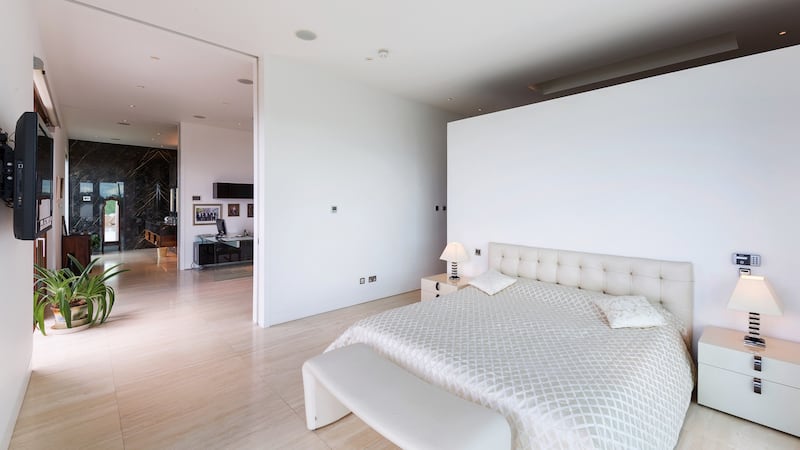
Mount Alverno, tucked away in an unusual enclave between Sorrento and Nerano roads (with access from both), is an old site on a rocky granite outcrop that has been cleverly reconfigured to make the very most of sweeping views that take in Howth Head, Dalkey Island, Killiney Bay and Bray Head.
This goes some way towards explaining the hefty €8.5 million price tag through Sherry FitzGerald for this 655sq m (7,050sq ft) property on just under an acre. But it's the quality of the very unusual contemporary design that really elevates the overall package.
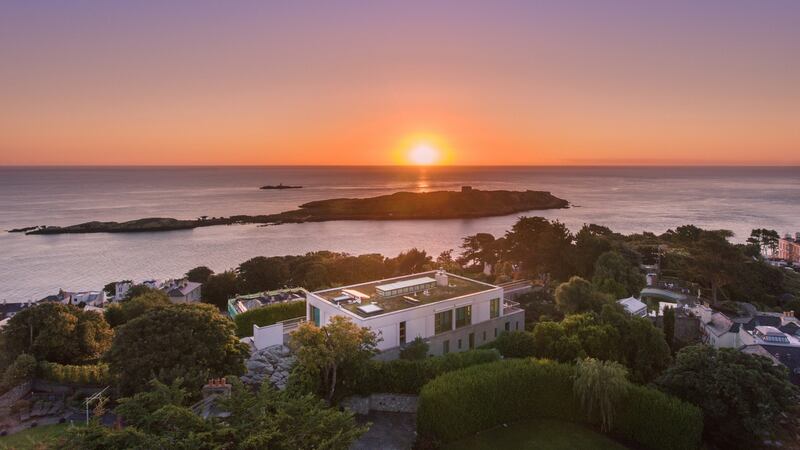
The house is part of a cluster of homes on Beacon Hill once owned by socialite Renata Coleman. The principal house is Monte Alverno, a large Victorian property that shares its Sorrento Road driveway (and a tennis court) with Mount Alverno. Also accessed here are two further properties originally bought from the Coleman family trust by businessman Harry Crosbie and sold on to Van Morrison and Michelle Rocca (Kilross House) and Formula One driver Eddie Irvine (Kilross Cottage).
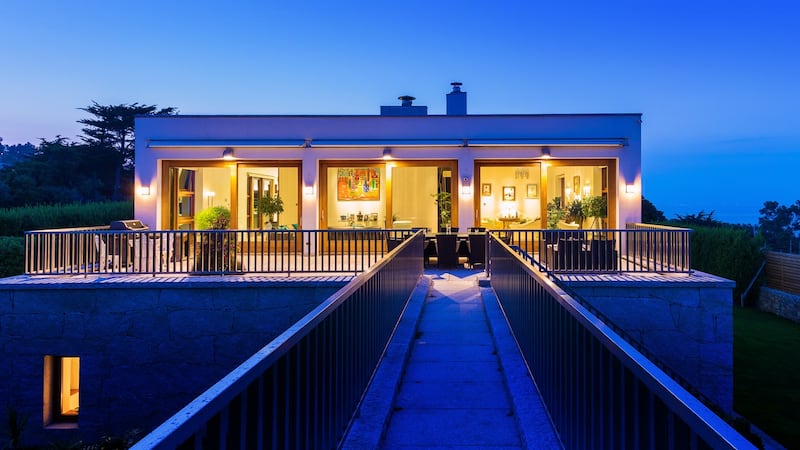
Mount Alverno was placed on the market for £2.5 million in 2000 and a year later the property guided £1.8 million at auction. It was subsequently bought for £1.4 million by Conor and Eileen Kavanagh, of DC Kavanagh publishers, which for many years was the country’s biggest print and mailing company, including government publications in its portfolio.
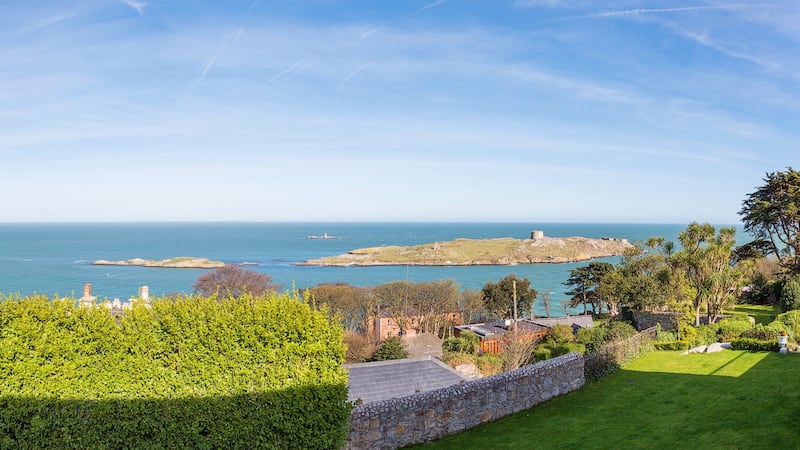
Overgrown
“Eileen had always favoured living by the sea. We saw an ad in the paper for this site, and went along to take a look. It was completely overgrown. We only had an idea there was a lot of rock there. Eileen suggested we make a feature of it and make the house look like it had literally grown out of the ground,” says Conor. John Meagher of award-winning architects de Blacam & Meagher, drew up early rough sketches which were “spot on” for what the Kavanaghs had in mind for their dream design. The original house was demolished to make way for an entirely new build.
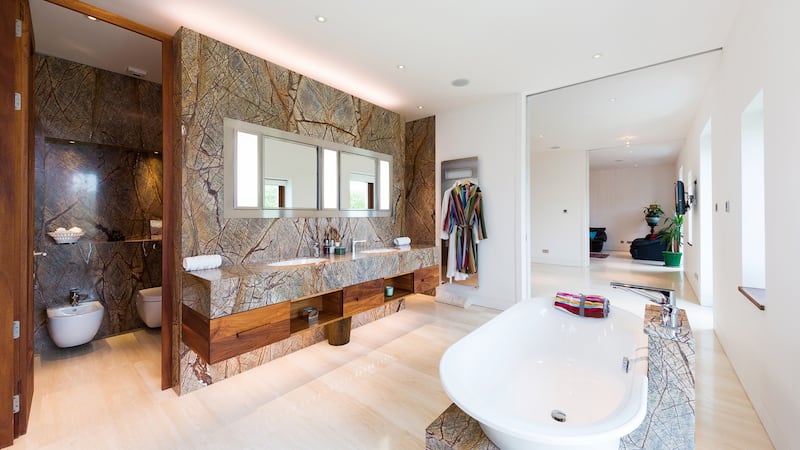
But it didn’t come together overnight. The first planning approval was secured in 2004 – “to a design that suited the planners but not us” – and they finally proceeded, with further amendments, in 2006.
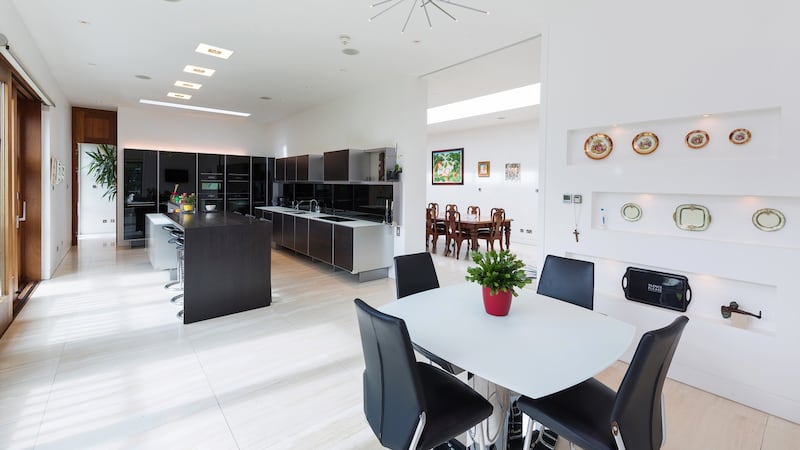
In 2009 the Kavanaghs moved in, but even then there were further stumbling blocks in the form of a widely publicised battle with neighbour Michelle Rocca over planning issues first, followed by a lengthy court battle where Rocca argued that the refurbishment of Mount Alverno interfered with sea views from her home. In the end Rocca dropped the case and was ordered to pay costs.
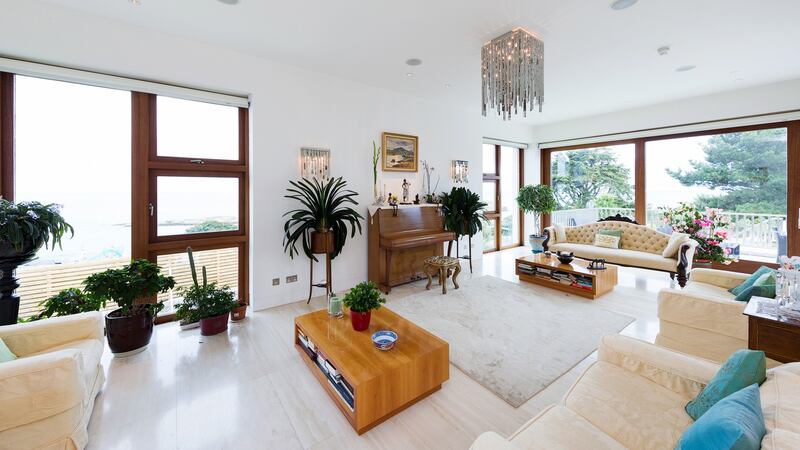
The finished design is a fine two-storey, five-bed, flat-roof residence, with a granite-clad ground floor and a white-rendered first floor. An expansive first-floor terrace, accessed from a wall of floor-to-ceiling sliding wood and glass doors, links via a granite gangway bridge to the rambling garden set in separate planted sections. The overall feel is very continental and the views are panoramic.
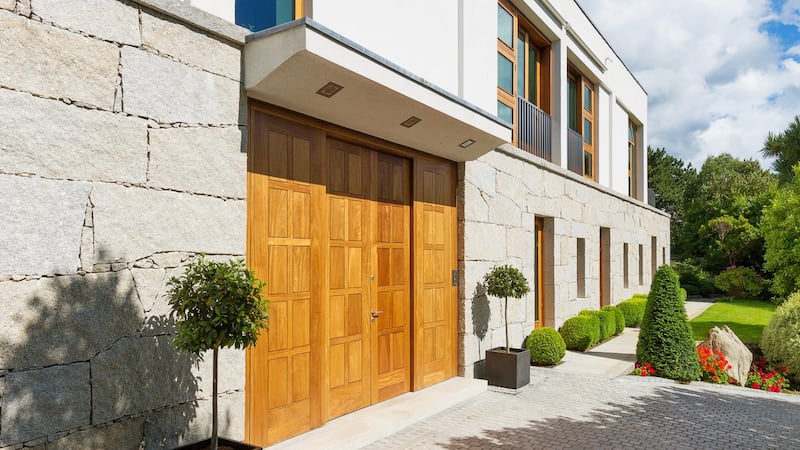
Having seen his work on a villa in Portugal, the Kavanaghs visited master stonemason Humberto Sousa and engaged his services. Three hundred tonnes of Portuguese granite later, and Sousa is responsible for the most striking element of the house, the impeccably assembled granite-clad exterior and the very impressive use of the same stone in the uprights and architraves of the interior. Each upright weighs more than a tonne, and has a surprisingly warm effect when set in context with gleaming travertine marble floors and solid iroko wood doors.
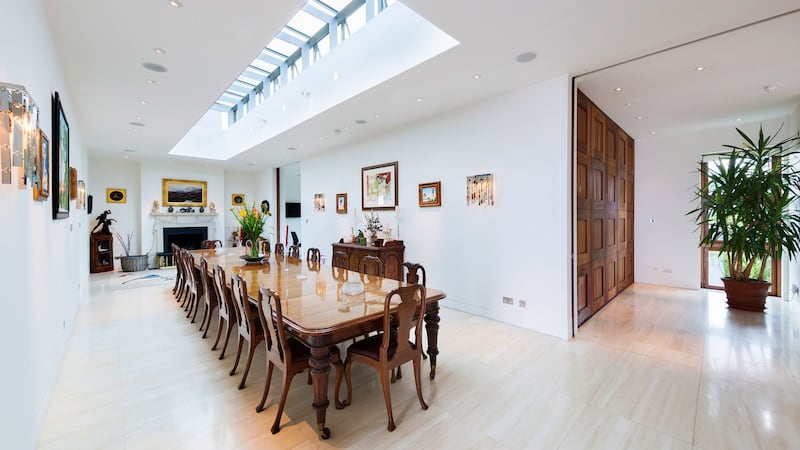
It feels like a Mediterranean-inspired villa, though Conor says that wasn’t the goal. “The motivator was always quality. We wanted everything to look solid and thick. The stone was cut to fit cleanly around the windows. The reveals on the pillars are 300mm thick. And while the design was open plan, we needed to be able to close off areas.” This was achieved with the addition of huge Japanese “shoji”-style sliding doors made from hardwood and frosted shockproof panels.
Granite pillars
Beyond the impressive solid wood front door, the reception hall is dominated by a custom-built Navona Travertine floating staircase, dramatic granite pillars and Iroko wood doors and windows. The ground floor comprises four huge bedrooms, all en suite, finished to the highest imaginable spec with Italian marble tiling (installed by Italian craftsmen), including a guest suite incorporating a living room, bedroom, en suite and a dressing room. There’s a lift here too to the first floor.
On the upper level the views really come into their own, with curtain wall sliding and picture windows on three sides. The space is anchored at the centre by an atrium dining room. Conor says this was a key requirement of the design, as they wanted a room that could take 24 treasured antique chairs, and the result runs the entire length of the central upper level of the house. Here also is one of the few nods to older period styles with a huge antique sandstone fireplace sourced from Tyrone taking pride of place at the top of the room.
Off this is the main bedroom suite, a drawing room and the kitchen, all of which can be closed off, if required, via those smart sliding doors. The main suite includes a study, dressing room and an en suite with superb sea views. The aspect continues in the elegant drawing room, which leads around to the main living area, where a wall of sliding glass opens on to the substantial outdoor terrace, and around again to the super sleek monochrome kitchen, which looks back up Killiney Hill.
The uncluttered design of the house has allowed the Kavanaghs to showcase their many artworks and objets to maximum effect. These include many examples of the work of Conor’s late cousin, Barry Castle, her husband Philip Castle and their close friend Pauline Bewick.
Pictures really only do Mount Alverno partial justice, it really needs to be seen to be appreciated for its setting, lighting and atmosphere. It’s a real breath of fresh air in a town often over preoccupied with clinging to original features and layouts that no longer work for modern living.
The Kavanaghs are moving on to something smaller, another project maybe and the setting will be important,but Conor is under no illusion about how special this place has been: “I think the property speaks for itself. The granite outcrop has been such a wonderful feature, with its meandering paths. You can sit on the terrace and literally watch the changing elements. The ambience of the site changes constantly and it’s just magnificent to watch.”












